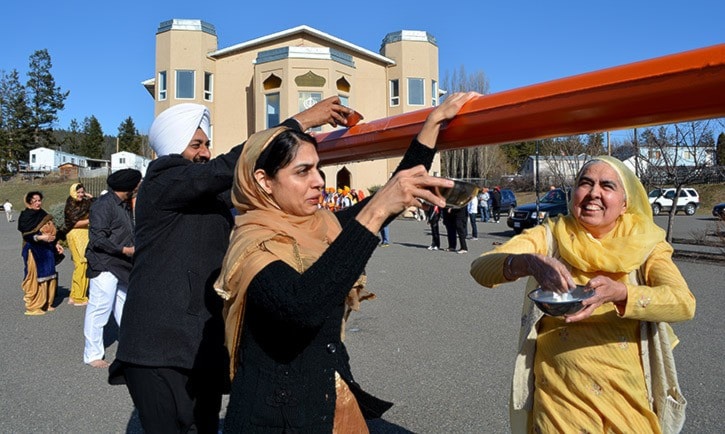Sikhs in Williams Lake celebrated Vaisakhi Day Saturday and Sunday at the Western Singh Sabha Society Temple on Pine Street.
The Guru Nanak Sikh Temple on Western Avenue will celebrate Vaisakhi Day starting on Friday morning, April 25 until about noon on Sunday, April 27.
The flag raising ceremony will be at 4:30 p.m. on Saturday, April 26.
During the flag raising ceremonies formal tribute is paid to the Panj Pyare or the Five Beloved Ones originally proclaimed by Guru Gobind Singh to represent the embodiment of the Guru himself.
During the three days of celebration congregation members take turns reading the Sikh holy book called Guru Granth Sahib so that there is a continuous reading of the teachings.
Baisakhi Day or Vaisakhi Day of March 30, 1699 is of significant importance for the Sikhs. It was on this day that Guru Gobind Singh - the Tenth Guru of the Sikhs founded the Akal Khalsa (Community of the Pure) at a ceremony organized at Keshgarh Sahib near Anandpur.
The Akal Khalsa played a significant role in resistance against Mughal rule.
Every year on April 13, Sikhs celebrate with great ceremony the birth of the Khalsa Panth. Apart from fighting political tyranny, Guru Gobind also sought to eliminate social discriminations in the name of caste with the establishment of Khalsa Panth.
The Panj Piyaras set by the Guru amalgamated people of low and high caste into one as it consisted of people of different strata of the society.
To further do away with the system of caste discrimination all Sikh men were given the name Singh (Lion) and all women were given the name Kaur (princess).
The Guru Gobind Singh also gave his new Khalsa a unique, indisputable, and distinct identity; bana, the distinct Sikh clothing and headwear, along with five emblems of purity and courage.
These symbols, worn by baptized Sikhs of both sexes, today, are popularly know as the Five Ks: Kesh, unshorn hair; Kangha, the wooden comb; Karra, the iron (or steel) bracelet; Kirpan, sword; Kachera, modest underwear.
- Monica Lamb-Yorski photos
